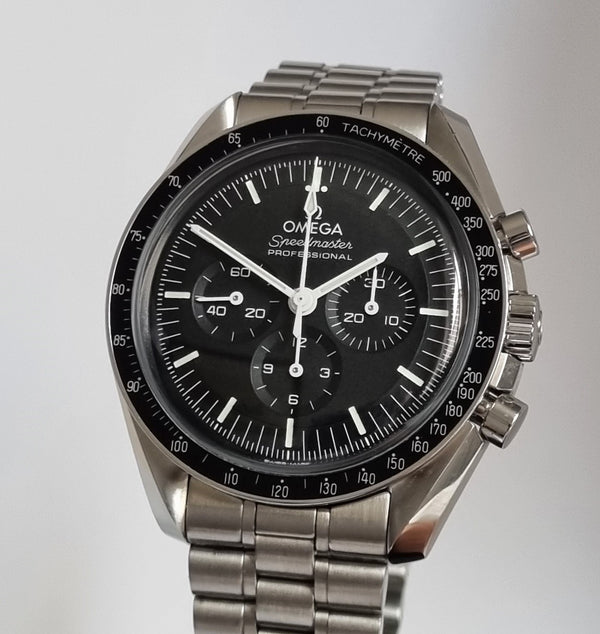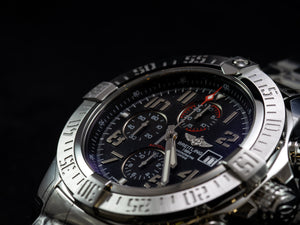THE HISTORY OF OMEGA WATCHES
PART 1
Omega watches have a strong and enviable reputation in the watch industry. They have even served on various NASA space missions (Omega was the first watch worn on the Moon), and they are still in use today by astronauts as part of their equipment when they go on various missions and explorations.
Omega is also the official timekeeper for the Olympic games and many other international sports events.
Omega watches are famous for their reliability and versatility and they have played a huge role in defining the art of mechanical watchmaking.
Omega began watchmaking in 1848. Today, their reputation remains as one of the very best watchmakers in the world.
With Omega, it’s all about the iconic brand name, the style and models, the durability, and the details. In some models there are over two hundred perfectly engineered tiny perfect parts. Omega are true watch artisans, they build great in house movements, and are masters in the industry.
In over 150 years, they have produced classics and timeless timepieces showing staggering beauty and design.
Some of Omega's well known and popular series include the Omega Seamaster, the Omega Planet Ocean, Omega Constellation, and of course the Omega Speedmaster.
We will dive into the Omega Speedmaster models and history in this first part of this blog.
There are plenty of collectible and interesting Omega watches available in the secondary watch market, we can surely say that pre-owned Omega watches are the ideal choice for someone who wants a timeless and great investment timepiece.
THE OMEGA SPEEDMASTER – THE BEGINNIG


The Speedmaster is the best known model of the brand. The first model was weleased in 1957, and marked the launch of the “Professional” collection few years later. The Speedmaster is known as the first watch worn on the Moon!
The success deriving from their use for the NASA mission was huge and well deserved.
The first model, the CK2915 is the model that generated the entire Speedmaster series. The peculiarities were the so called “Broad Arrow” hands, a 39mm stainless steel symmetric case and three sub-dial layout, a screw-in case back with seahorse at the centre, an engraved tachymetric scale of 1000, the black face treated with tritium for optimal visibility, the applied Omega logo in steel, the hesalite glass and pump action chronograph buttons.
This model stayed in production only two years. Its short production makes it particularly sought after among collectors and a pearl in the vintage market
The second model came into production in 1959, so called CK2998 was a 40mm case diameter watch, with a simpler bezel and pencil “dauphine” hands, this is the first Omega in space as worn on the wrist of Wally Schirra during one of America’s Mercury space missions.
Next came the Speedmaster ST 105.002 (year of production 1962) - a transitional model between the reference CK 2998 and the ST 105.003 ( so Called Ed White or pre moon, with no "Professional" writing on the dial.
After that, we have possibly the most famous Omega Speedmaster of them all, the ST105.012
The year of production starts in 1963, and this is the first Speedmaster to be made with an asymmetric case and “Lyre” horns.
Since the 1966 the face incudes the word “Professional”. The new title confirms the official use in NASA’s space programs.
The ST 105.012 is the Omega Speedmaster worn by Neil Armstrong and Buzz Aldrin during the Apollo 11 space mission.
The idea behind the Speedmaster model was to create a very robust and waterproof chronograph with a fairly simple dial easy to read. But to qualify as NASA official watch, they had to pass very tough tests.
These tests included high temperatures of 93 Degrees Celsius (200 Fahrenheit), a temperature fluctuation in a pure vacuum test to mimic space, and very aggressive acceleration, decompression and vibration tests. And the Speedmaster came through them ticking.
What was clearly identifiable on a Speedmaster was also the external bezel with the tachometric scale, which was a novelty at that time. The black dial with tritium hands and hours recalled also instruments in sporty cars at the time.
The case with a screw down back, and the pump- action chronograph buttons was certainly a unique Omega design and their engineers made their first prototypes and passed tests successfully.
THE CALIBER 321


The first Caliber used in the first Omega watches is the legendary Caliber 321, mechanical hand wound, a movement that dated from as far back as 1942 and was made in conjunction with Lemania.
The iconic column wheel controlled mechanism was used in a number of models from other manufacturers, such as Breguet and Patek Philippe, and Vacheron Constantine still use it today.
An interesting detail is that the Speedmaster was part of the large family of Seamasters therefore the seahorse symbol was kept on the base plate.
In the part 2 we will explore which reference was produced after 1968, their popularity and main differences, and the modern Omega Speemdaster we can buy today. What has changed and why?

